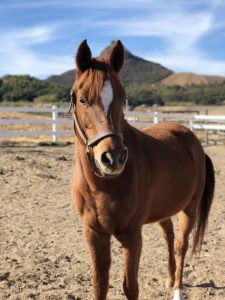Top 10 Things to do BEFORE you go horse shopping
Buying a horse is a big commitment in both time and money. The emotional energy spent is a large factor as well. With so many horses for sale, how do you choose?
If you buy a horse before you lay the correct groundwork, you run the risk of coming home with one that isn’t suitable for you. At the worst, he could be dangerous and at best, you could easily spend a thousand dollars or more to get professional trainer to correct the problems.
Make a plan before you look at horses for sale and do these 10 basic steps first.
1. Take riding lessons for at least six months.
Horse riding lessons will teach you the basics of control and the foundation for correct horsemanship. In addition to learning to ride a horse, you’ll also learn how to safely groom and handle one. You’ll establish a relationship with a professional horse person in your area who knows you and who you can turn to for help if you need it.
2. Decide on the type of riding you want to do.
There are many types of horse riding styles. The most basic are Western or English. Then you can break down those two styles into many subcategories. You don’t have to make one choice exclusive of all others. Many people enjoy riding both styles and compete in both.
Decide if you want a horse to trail ride and just enjoy having him or if you want to be competitive and show.
3. Horse’s personality
The type of personality you want for your horse depends a lot on the type of riding you want to do and also your personality. Some riders want a horse with a big engine and a lot of fire. Others like a horse to be quiet and laid back.
It’s usually easier to get the laid back one to rev his engine than to get a hot horse to relax.
4. Decide on what breed of horse you most want.

Once you’ve decided on the type of riding you’re interested in and the type of personality you want your horse to have, the breed choice will become easier. Some breeds are associated with certain types of riding. For instance, a Thoroughbred or Warmblood breed are usually thought of for the Hunter/Jumper circuit or dressage. In the past, the Quarter Horse, Appaloosas and Paints were thought of for Western riding. Today, these breeds can successfully compete at all levels with the more traditional hunter type horse.
If you want a very smooth ride, look at the gaited breeds such as Missouri Foxtrotters, Tennessee Walkers or Paso Finos.
5. Decide on how big a horse you need.
If you’re looking for a horse for a child, buy a pony that your child can groom and handle now. A too big horse is intimidating for a young child to deal with.
If you’re looking for one for yourself, consider the type of riding you want to do. Western styles of riding do not require a large horse and most of the stock type horses can carry a large adult even if the horse is 15 hands or smaller.
If you want to show in hunter/jumper classes, a 16+ hand horse is necessary to be competitive. However, if your plans are to learn to jump and go to small local shows, you’ll save money by buying a smaller horse.
6. Decide on the gender of the horse.
A gelding or a mare should be your only consideration. A stallion is difficult to handle and can be downright dangerous even if you are a very experienced rider. He isn’t suitable unless you’re in the breeding business.
Geldings make great riding horses and companions. Preferably he was gelded before his second birthday so that he never learned stallion behavior.
Mares sometimes get a bad rap for being difficult every time she comes into heat. Perhaps some are, but there are many wonderful mares with very stable personalities.
7. Decide where you will keep your horse.
If you plan to board, check out several boarding stables. Your first choice is probably the barn where you’ve been taking riding lessons. Look at some others to have for back-up choices and as a general comparison.
If you plan to keep your horse on your own property, be sure to have safe fencing, a solid barn and know your time schedule will allow you to feed your horse at least twice a day – every day – rain or shine. Find out any local and state liability laws for a horse property before you bring your new horse home.
8. Figure how much you can afford for the initial price of a horse.
The original purchase price of a horse is a large upfront expense. Obviously, the more you can afford to spend on a horse, the more choices you’ll have to look at when shopping. If you have this money saved up in advance, you’ll have better leverage with a seller. If you have to buy your horse on payments, you’ll limit your bargaining power and choices because many sellers won’t want to take payments.
9. Figure out your monthly expenses.
Monthly expenses include board, lessons and supplements if you keep your horse at a boarding stable. If you keep your horse at home, you’ll be buying feed, hay and stall bedding instead of a board bill.
There are reoccurring expenses that don’t come every month but still need to be added up for a year’s cost and averaged as a monthly expense. These include farrier visits, worming, vaccinations and vet care such as floating teeth and a yearly Coggins test.
10. Tack and Supplies
Purchase the basic supplies before you get your horse so that you’ll be all set when you bring him home. Brushes, shampoo, liniment, leg wraps, buckets and a first aid kit are a good start on supplies to have ready.
An all purpose headstall and a few bits, saddle pads, a saddle, halter and a long lead rope with a stout snap are your basic tack supplies.
If you follow these 10 steps before you begin horse shopping, you’ll have a clear idea of the horse that will be the best choice for you when you do begin your search.





















